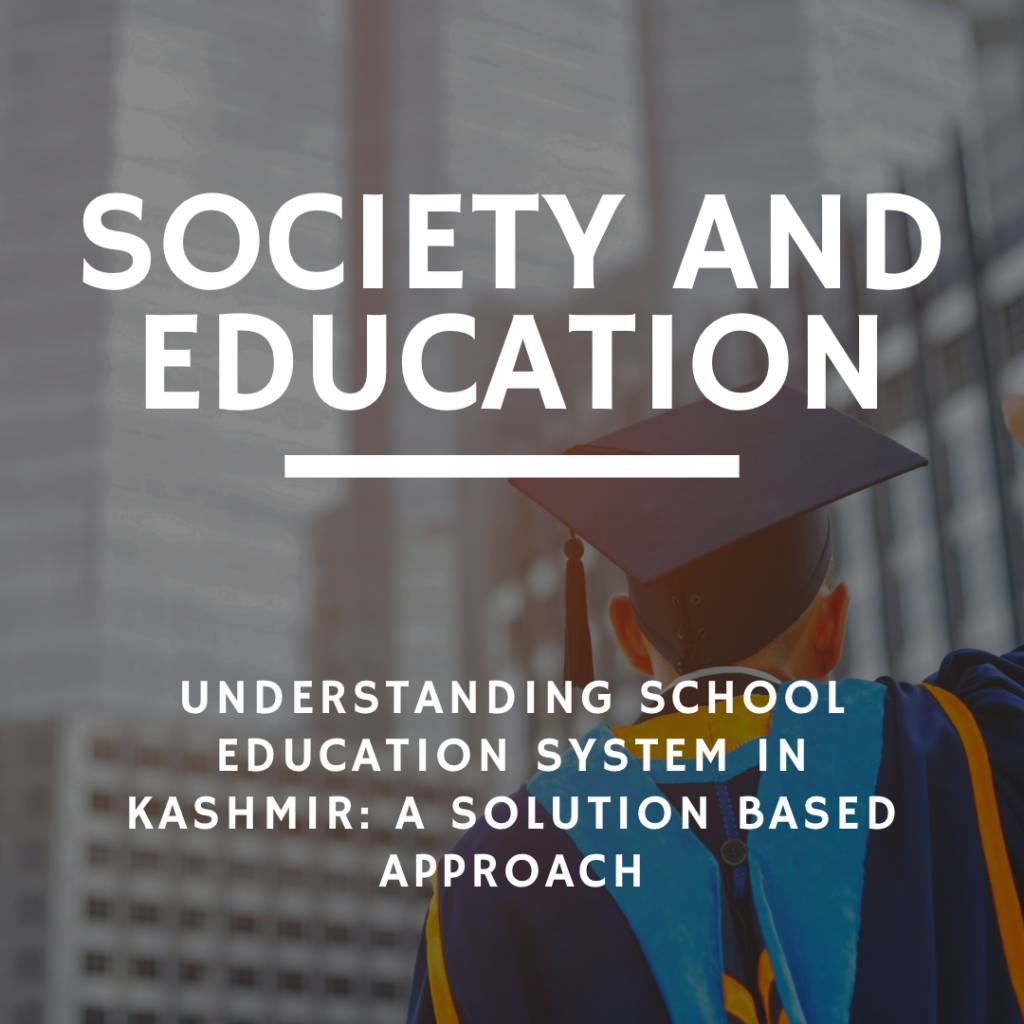Understanding Govt Education System in Kashmir.
Despite all the planning and money spent, the quality of education has declined over the years “Education is simply the soul of a society as it passes from one generation to another.”– G. K. Chesterton Literally, education means the imparting and acquiring of knowledge through teaching and learning, especially at a school or similar institution. Politically it’s a fundamental right provided to us by our Constitution. Economically, it is one of the most flourishing businesses with low investment and high return and with an ever increasing market. It is an enterprise; a public and private sector enterprise. We have seen government trying its best to enhance the quality of government schools. A number of steps have been taken and several of those have been successful. Despite all the planning and money spent, the quality of education has declined over the years. Every year, we see how government schools perform in the annual examination, and are witness to the intellect of a government school student. Capable officers enthusiastically try to reform it, by bringing in new new-schemes. Highly qualified staff has been selected through rigorous examinations and interviews. Capable and honest officers see to it that the schools function properly. Despite these the quality is validly low. There ought to be a mole somewhere? Let us examine the structure. The elements of school education are – teachers, infrastructure, administration, policies and initiatives, enrolment, student related factors and curriculum. Let us examine these to bring out the problem and try to formulate a solution for it. The Current Scenario: Teachers and other staff: The government schools boast of having highly qualified staff. The least qualified staff in a government school, appointed in last 10 years, would be a Graduate with a B.Ed, with exceptions to those who are appointed through SROs, and Special Drives. Some older staff members still teaching is several schools are Matric-pass or TDC-Pass albeit they also have undergone either a D.Ed or some intensive in-service training. These are the senior most teachers at the verge of retirement, or usually Headmasters in primary and middle school. They either do not have to teach, or will teach a class or two to the primary students. With a number of posts vacant and a number of teachers being used as clerks or in other non-teaching activities, the department still has a sufficient number of teachers if it works out the maths properly. The supporting staff is actually non-existing is most of the school. Peon, chowkidar, clerk, office-person etc., are entitled to only High School and above. Highly underpaid cook works in middle schools for MDM needs and is usually used as peon as well, and is paid by contribution of all the teaching staff. You get the picture, right? Infrastructure and other physical facilities: In the last one decade the infrastructure; buildings, bathrooms, cooking-areas and facilities like drinking water, electricity have been upgraded considerably. That said, they are still insufficient, most of the government schools do not have adequate classrooms. Two or three different classes are being taught in the same room. Playgrounds are still a distant dream. Almost all the schools, with a few exceptions, still do not have benches for the students. They still sit on mats, though blackboards and chalks have been replaced by whiteboards and markers. Labs and libraries, only in high schools and above. Mid-Day-Meals: Free lunch, yes please. It is a bait, an attempt to increase the attendance and admission intake of the schools by luring in the poor people with free-meals. Though it is a nice and effective initiative and serves its purpose, it has no other role in education system. A good deal of money is involved in the scheme which leads to several scams, some big and some small. Fake admission and attendance records have been maintained by a number of schools to extort money from the government scheme. No-failure up to class 8th : One of the main culprit schemes of government schools. Every student up to Class 8th is given a pink-slip into the next class, no matter what. Whether he is capable enough or not, studies or not, comes to school or not, if his details are existent on the school register, no matter fake, he is bound to pass under this scheme. The purpose is to check dropout rate and retain admissions. The scheme is a trick of government to increase on papers the literacy rate of the state. The main problem with this scheme is if you know you can do a thing in easier way why would you try the harder way. Checks and Balances in place: All the checks are being placed on the teaching faculty. They have to abide by a dozen rules and regulations, all of which even if followed religiously to the core, will still not yield any results. Officials have to move beyond surveillance and inculcate faith in teachers. A surprise inspection and a few questions to the students is a futile activity just to satisfy the need to be in power. A teacher is bound to reach on time, he has to make a teacher’s diary and lesson plans, he has to leave the school on time and he has to complete the syllabus on time all of which can be verified by the attendance register, and the teacher’s diary. With this a teacher is not accountable for what he does in the school, he just has to come and leave on time, rest of the time he can kill the time. Lesson plans and diaries are a way to convince the officials that teachers come prepared and that the course work is running as per schedule. They actually have a negative impact, most of the teachers prepare it just for the sake of it. In a government school where you have so many uncontrolled factors like, irregular attendance, repeating the same lesson again and again due to various reasons, the focus shifts on completing the syllabus instead of learning. To ensure
Understanding Govt Education System in Kashmir. Read More »



